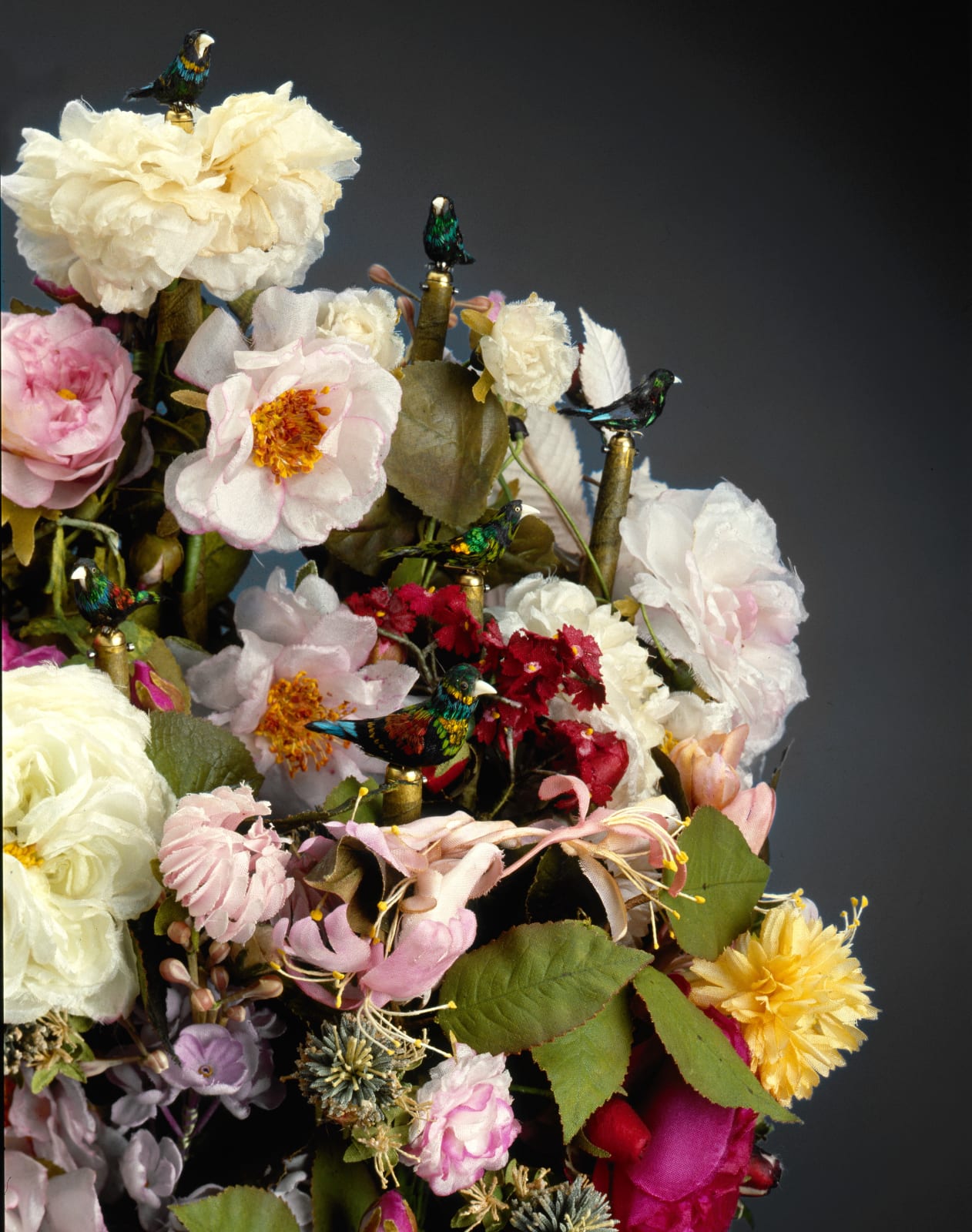Frères Rochat
Further images
Literature
Derek Roberts, “Mystery, Novelty and Fantasy Clocks”, 1999, p. 212, pl. 18, 5 A & B.
An extremely rare and beautiful early nineteenth century Swiss gilt bronze mounted musical and singing bird clock signed on the automata movement by Rochat Frères, signed on the musical movement by Nicole Frères à Geneva and signed on the dial Bautte et Moynier and further signed and dated on a brass plaque attached to the base Bautte et Moynier à Geneve 1824, the small engine turned gilt bronze dial mounted on the side of an urn, with a floral and foliate cast bezel, Roman numerals and blued steel moon-shaped hands for the hours and minutes. With a complex automaton movement to activate the eight moving and singing birds and very fine musical movement to activate the birds who can sing four different tunes. The clock formed as a magnificent floral bouquet in an urn, the flowers and foliage still retaining their original bright colours made from various fabrics amongst which perch eight brightly coloured feathered birds who sing and move on demand, the abundant bouquet issuing from a fluted gilt bronze urn set either side with turned ring handles, the urn on a spreading oval foot cast with palmettes, the conformingly shaped ebonised wooden oval base with fine central gilt bronze mounts featuring conjoined ribbon-tied floral and fruit-filled cornucopias supported either side by a pair of winged chimeras with scrolled foliate tails, the stepped lower part of the base mounted at the front with a brass plaque and two knobs and likewise on the side for the automata and musical options to include play, repeat and silence, the whole supported on turned bun feet
Geneva, dated 1824
As Derek Roberts notes “this beautiful clock has no less than eight singing and moving birds.” Signing and automata bird clocks were a speciality of Swiss makers, especially those from Neuchatel, la Vallée de Joux and Geneva, who produced some of the world’s finest examples from about 1780 until 1840. As here each clock resulted from the collaboration of several craftsmen. Among the best makers of such complex pieces were Jaquet-Droz and later Rochat Frères and François Nicole and his brother. In this case the completed piece was then delivered to the firm of Bautte & Moynier, who was the leading retailer of such luxury items. Not only very rare they were extremely expensive owing to the high manufacturing costs but interestingly their popularity appears to correlate with the expanding commercial links with the Chinese, Ottoman, and Russian markets, which blossomed towards the end of the eighteenth century.
The firm of Bautte & Moynier, at 61, rue du Rhône in Geneva were registered as working from about 1824-1831. The concern began with Jean-François Bautte, jeweller and goldsmith, who by 1791 had a large factory with some 300 workers. From 1793 till 1802 it was run by Jean-François Bautte and Jacques-Dauphin Moulinié and known as Moulinié-Bautte. They were then joined by Jean-Gabriel Moynier and from 1808 until c.1824, were known as Moulinié-Bautte & Moynier. Bautte & Moynier, who enjoyed considerable repute were cited in writings by Honoré de Balzac and counted among their clientele Alexandre Dumas and John Ruskin.





